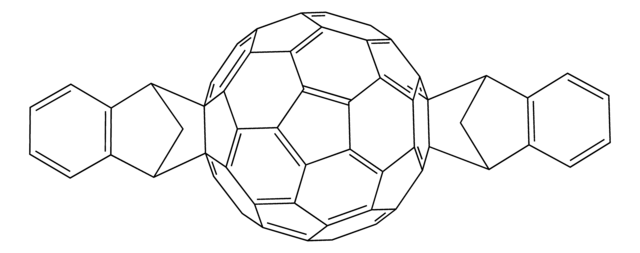906387
ITIC-Cl
Sinonimo/i:
3,9-bis(2-methylene-((3-(1,1-dicyanomethylene)-6,7-dichloro)-indanone))-5,5,11,11-tetrakis(4-hexylphenyl)-dithieno[2,3-d:2′,3′-d′]-s-indaceno[1,2-b:5,6-b′]dithiophene, ITIC-2Cl
About This Item
Prodotti consigliati
Descrizione
Band gap: 1.48 eV
Saggio
98%
Stato
powder
Energia dell’orbitale
HOMO -5.68 eV
LUMO -4.20 eV
Stringa SMILE
[s]1c2c([s]c(c2)\C=C%14/C(=O)c%15c(cc(c(c%15)Cl)Cl)C/%14=C(C#N)C#N)c3c1c4c(cc7c(c4)C(c%10c%11[s]c(cc%11[s]c%107)\C=C%12\C(=O)c%13c(cc(c(c%13)Cl)Cl)C\%12=C(C#N)C#N)(c9ccc(cc9)CCCCCC)c8ccc(cc8)CCCCCC)C3(c6ccc(cc6)CCCCCC)c5ccc(cc5)CCCCCC
InChI
1S/C94H78Cl4N4O2S4/c1-5-9-13-17-21-55-25-33-61(34-26-55)93(62-35-27-56(28-36-62)22-18-14-10-6-2)75-45-72-76(46-71(75)89-85(93)91-81(107-89)43-65(105-91)41-73-83(59(51-99)52-100)67-47-77(95)79(97)49-69(67)87(73)103)94(63-37-29-57(30-38-63)23-19-15-11-7-3,6
CGRWDQBQNINDAH-WJLAHIJSSA-N
Categorie correlate
Descrizione generale
Applicazioni
Codice della classe di stoccaggio
11 - Combustible Solids
Classe di pericolosità dell'acqua (WGK)
WGK 3
Punto d’infiammabilità (°F)
Not applicable
Punto d’infiammabilità (°C)
Not applicable
Scegli una delle versioni più recenti:
Certificati d'analisi (COA)
It looks like we've run into a problem, but you can still download Certificates of Analysis from our Documenti section.
Se ti serve aiuto, non esitare a contattarci Servizio Clienti
Possiedi già questo prodotto?
I documenti relativi ai prodotti acquistati recentemente sono disponibili nell’Archivio dei documenti.
I clienti hanno visto anche
Articoli
The emerging organic photovoltaic (OPV) technology is very promising for low-cost solar energy production. OPV devices can be produced using high-throughput, large-volume printing methods on lightweight and flexible plastic substrates, making them easy to deploy and use in innovative ways.
The emerging organic photovoltaic (OPV) technology is very promising for low-cost solar energy production.
Professor Chen (Nankai University, China) and his team explain the strategies behind their recent record-breaking organic solar cells, reaching a power conversion efficiency of 17.3%.
Global Trade Item Number
| SKU | GTIN |
|---|---|
| 906387-100MG | 4054839936722 |
Il team dei nostri ricercatori vanta grande esperienza in tutte le aree della ricerca quali Life Science, scienza dei materiali, sintesi chimica, cromatografia, discipline analitiche, ecc..
Contatta l'Assistenza Tecnica.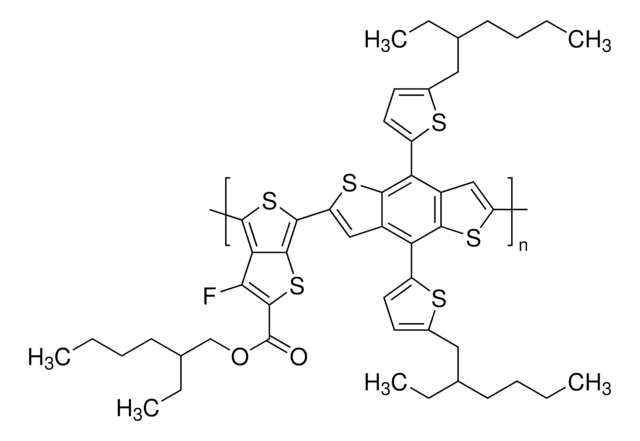
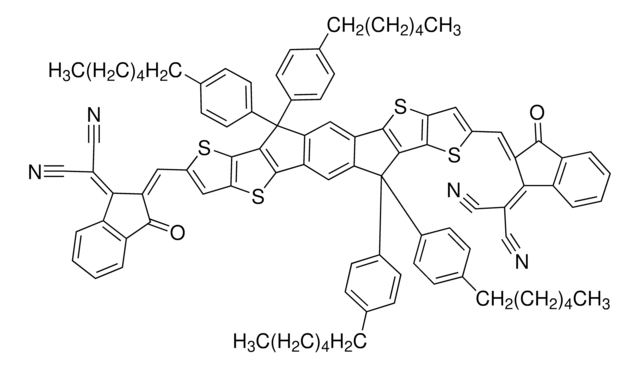



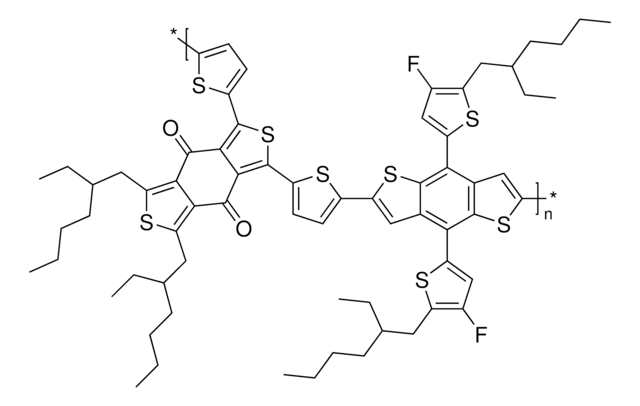
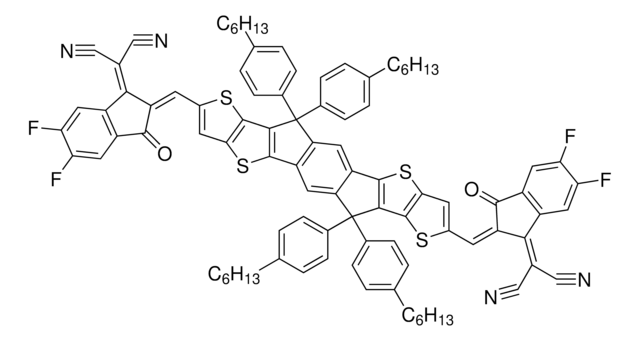
![[6,6]-Phenyl C71 butyric acid methyl ester 99%](/deepweb/assets/sigmaaldrich/product/structures/716/624/9fb9f2f0-ae99-429f-8d3a-b12267976a4d/640/9fb9f2f0-ae99-429f-8d3a-b12267976a4d.png)


